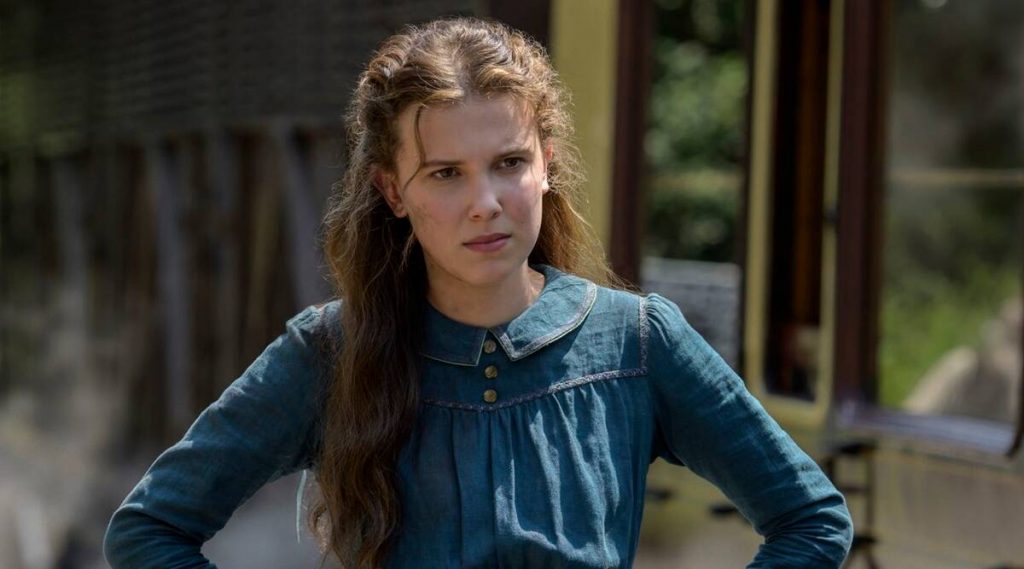The wacky fourth wall breaks that Millie Bobby Brown is known for in Harry Bradbeer’s “Enola Holmes” movies have grown so distinctive that in the sequel, the “Stranger Things” star strove to include them in as many scenes as she could. At the “Enola Holmes 2” New York premiere on Thursday night at the Paris Theater, Brown said to Variety, “I believe in every scene we attempted performing, we attempted to break the fourth wall, and he edited the most successful attempts.”
Brown continued by claiming that she was inspired by Phoebe Waller-use Bridge’s fourth-wall-breaking in the popular Amazon Prime series “Fleabag,” for which Bradbeer also acted as director. With her wit, comedy, and timing, she simply likes found the most ideal technique to breach the fourth wall, according to Bobby Brown. It’s motivating to me. Harry guiding me on such a wonderful path to attain it has been a godsend since I know how closely he has worked with Phoebe in the past.
Enola Holmes opens her own detective business in the sequel, continuing in the footsteps of her well-known brother Sherlock (Henry Cavill). Cavill stated on the red carpet that while it is “very wonderful” to return to the title role of Superman, he prefers to play a supporting role as Sherlock Holmes. According to Cavill, “This is a Sherlock who exists in a reality that none of the previous Sherlocks have—a universe where Enola exists.” “Since Sherlock is a supporting character, it enables a separate hue to be applied to him. He is no longer the focus; instead, Enola and her tale are now.
Bradbeer stated that he intended to flip the script for the sequel by having the teenage investigator uncover systemic problems at a matchstick factory. The first movie focused on Enola meddling in aristocratic matters. His plot is inspired by the Matchgirls’ Strike of 1888, a historical occurrence in which adolescent girls protested unfavorable working circumstances. Poplar sticks were once dipped in white phosphorus to make matches, which resulted in some industrial employees developing severe facial deformities known as “phossy jaw.”
Because it was the first strike for women, by women, “The Matchgirls’ Strike struck us as being a fantastic feminist emblem,” Bradbeer said in an interview with Variety. That mirrored our belief that Enola must collaborate with others to succeed rather than relying alone on herself. It is a narrative that shifts focus from “I” to “us,” and it is a tale of sisterhood.
The historical incident will be highlighted in Bradbeer’s film, and audiences will learn about “the strength of the organization,” he added. According to Susan Wokoma, who portrays a covert member of the feminist organization in the movie, young girls may learn a lot from the Matchgirls’ Strike. These girls, according to Wokoma, “learned how to petition for themselves, how to speak out, know what their rights are, and realize that you’re not too young to be able to create change.”
When questioned about potential follow-ups, the series’ actress Sharon Duncan-Brewster noted how many underutilized British individuals from the late 1800s may be incorporated into Enola’s investigative tales. Many persons who were in the UK at the time remain unknown to anybody, according to Duncan-Brewster. There have been Black scientists, surgeons, princes, intellectuals, and football players who joined the military before returning home with awards. Any one of them is up for discussion. The upcoming “Enola Holmes” movie, according to Bradbeer, may focus on a pivotal period in the women’s suffrage fight.
There’s that to look forward to, the filmmaker said: “The suffrage movement comes to a culmination around the time of the first World War.
